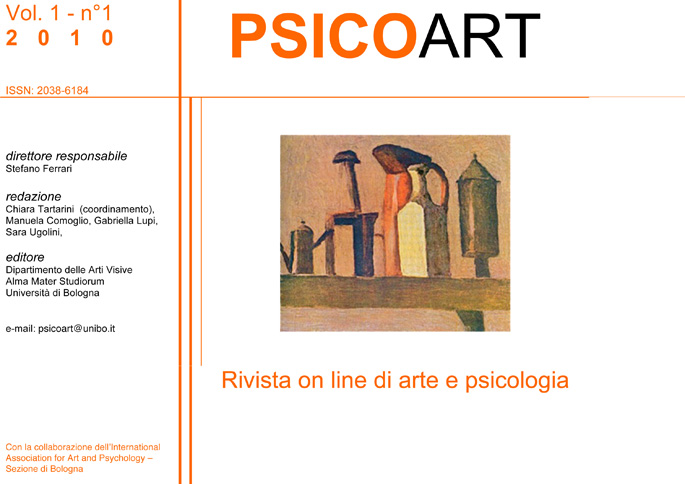Note sul caso Leonardo
DOI:
https://doi.org/10.6092/issn.2038-6184/2059Abstract
Questo breve scritto di Alessandro Serra, concepito come contributo iniziale per uno studio più ampio – che sfortunatamente non ha mai visto la luce – analizza in maniera sintetica le diverse reazioni suscitate da uno dei più celebri scritti freudiani: Un ricordo di infanzia di Leonardo da Vinci (1910). Dalla riluttanza di Ernst Kris fino all’importante testo di Meyer Schapiro, analisti, psicologi e storici dell’arte si sono ritrovati d’accordo nel respingere le conclusioni generali di questo saggio, salvando le premesse teoriche sulle quali si fonda: lo scritto freudiano rimarrebbe infatti un testo importante nella bibliografia dell’autore solo poiché in esso si delinea per la prima volta una “teoria delle pulsioni” e si formula in maniera compiuta il concetto di “sublimazione” . Ma per Serra questo non è sufficiente. L’Autore riporta un lungo passo dello scritto freudiano, mettendo in luce le influenze storico-critiche che hanno portato alla sua realizzazione; si sofferma poi sul noto errore di traduzione, che trasforma il nibbio di Leonardo nell’avvoltoio di Freud; passa in rassegna le posizioni di Jung e del pastore Pfister (fino a menzionare quella di Christensen, che nel 1944, in uno scritto apparso sull’autorevole “Psychoanalytic Review”, parla addirittura della “aquila di Leonardo”). Così facendo, mentre sottolinea la sequenza di errori presenti nel caso specifico, Serra ribadisce l’importanza del contributo psicoanalitico – e in particolare “psicobiografico” – per una comprensione flessibile del fare artistico, intesa, secondo le parole di Merleau-Ponty che fanno da chiusa al testo, come interpretazione dello “scambio tra avvenire e passato”.Downloads
Come citare
Serra, A. (2010). Note sul caso Leonardo. PsicoArt – Rivista Di Arte E Psicologia, 1(1). https://doi.org/10.6092/issn.2038-6184/2059
Fascicolo
Sezione
Articoli
Licenza
Copyright (c) 2010 Alessandro Serra
I diritti d'autore e di pubblicazione di tutti i testi pubblicati dalla rivista appartengono ai rispettivi autori senza alcuna restrizione.
La rivista è rilasciata sotto una licenza Creative Commons Attribuzione 4.0 International (licenza completa).
Vedere anche la nostra Open Access Policy.






